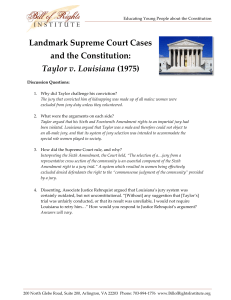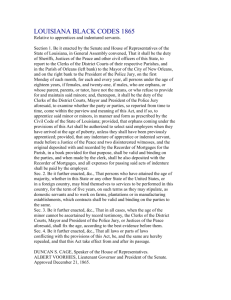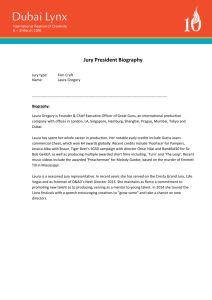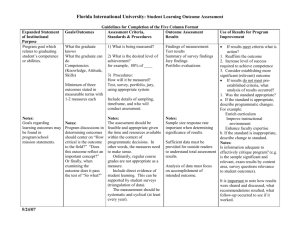Taylor v. Louisiana (1975)
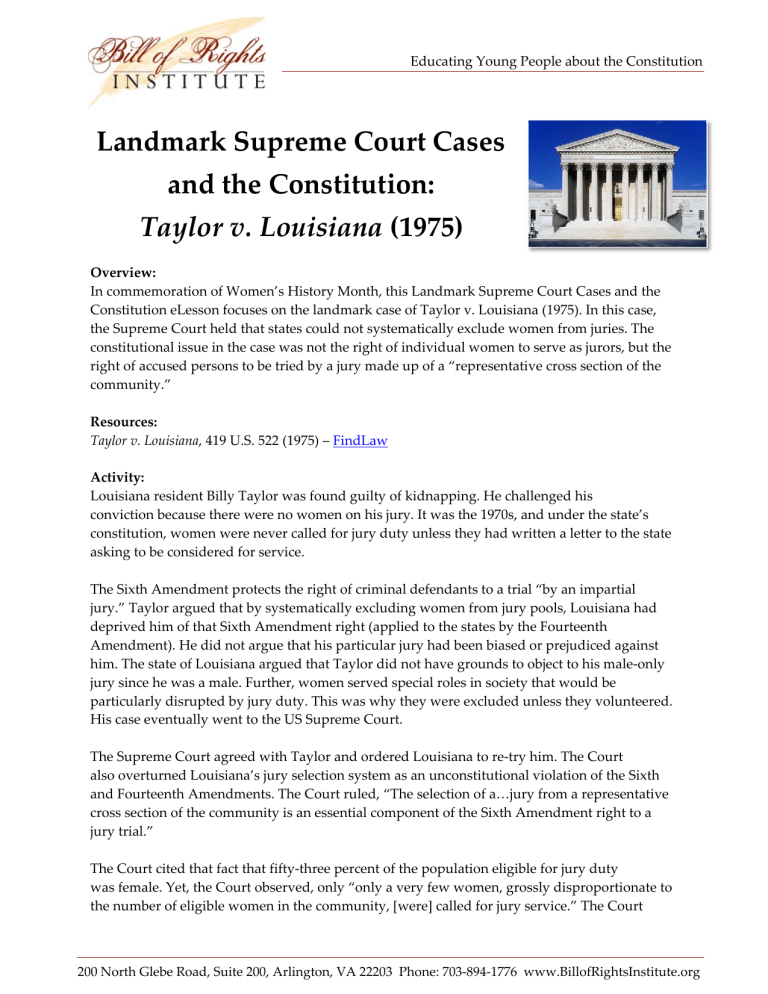
Educating Young People about the Constitution
Landmark
Supreme
Court
Cases
and
the
Constitution:
Taylor
v.
Louisiana
(1975)
Overview:
In commemoration of Women’s History Month, this Landmark Supreme Court Cases and the
Constitution eLesson focuses on the landmark case of Taylor v.
Louisiana (1975).
In this case, the Supreme Court held that states could not systematically exclude women from juries.
The constitutional issue in the case was not the right of individual women to serve as jurors, but the right of accused persons to be tried by a jury made up of a “representative cross section of the community.”
Resources:
Taylor v.
Louisiana , 419 U.S.
522 (1975) – FindLaw
Activity:
Louisiana resident Billy Taylor was found guilty of kidnapping.
He challenged his conviction because there were no women on his jury.
It was the 1970s, and under the state’s constitution, women were never called for jury duty unless they had written a letter to the state asking to be considered for service.
The Sixth Amendment protects the right of criminal defendants to a trial “by an impartial jury.” Taylor argued that by systematically excluding women from jury pools, Louisiana had deprived him of that Sixth Amendment right (applied to the states by the Fourteenth
Amendment).
He did not argue that his particular jury had been biased or prejudiced against him.
The state of Louisiana argued that Taylor did not have grounds to object to his male ‐ only jury since he was a male.
Further, women served special roles in society that would be particularly disrupted by jury duty.
This was why they were excluded unless they volunteered.
His case eventually went to the US Supreme Court.
The Supreme Court agreed with Taylor and ordered Louisiana to re ‐ try him.
The Court also overturned Louisiana’s jury selection system as an unconstitutional violation of the Sixth and Fourteenth Amendments.
The Court ruled, “The selection of a…jury from a representative cross section of the community is an essential component of the Sixth Amendment right to a
jury trial.”
The Court cited that fact that fifty ‐ three percent of the population eligible for jury duty was female.
Yet, the Court observed, only “only a very few women, grossly disproportionate to the number of eligible women in the community, [were] called for jury service.” The Court
200 North Glebe Road, Suite 200, Arlington, VA 22203 Phone: 703 ‐ 894 ‐ 1776 www.BillofRightsInstitute.org
Educating Young People about the Constitution
concluded that excluding women from juries deprived defendants of the “commonsense judgment of the community” that juries were designed to impart.
Finally, the “distinctive” roles that women played in society was a “rational” reason for
the state’s jury system, but individual exemptions from jury duty could always be made.
It was invalid for Louisiana to suggest that “it would be a special hardship for each and every woman to perform jury service or that society cannot spare any women from their present duties.”
Discussion Questions:
1.
Why did Taylor challenge his conviction?
2.
What were the arguments on each side?
3.
How did the Supreme Court rule, and why?
4.
Dissenting, Associate Justice Rehnquist argued that Louisiana’s jury system was certainly outdated, but not unconstitutional.
“[Without] any suggestion that [Taylor’s] trial was unfairly conducted, or that its result was unreliable, I would not require
Louisiana to retry him…” How would you respond to Justice Rehnquist’s argument?
